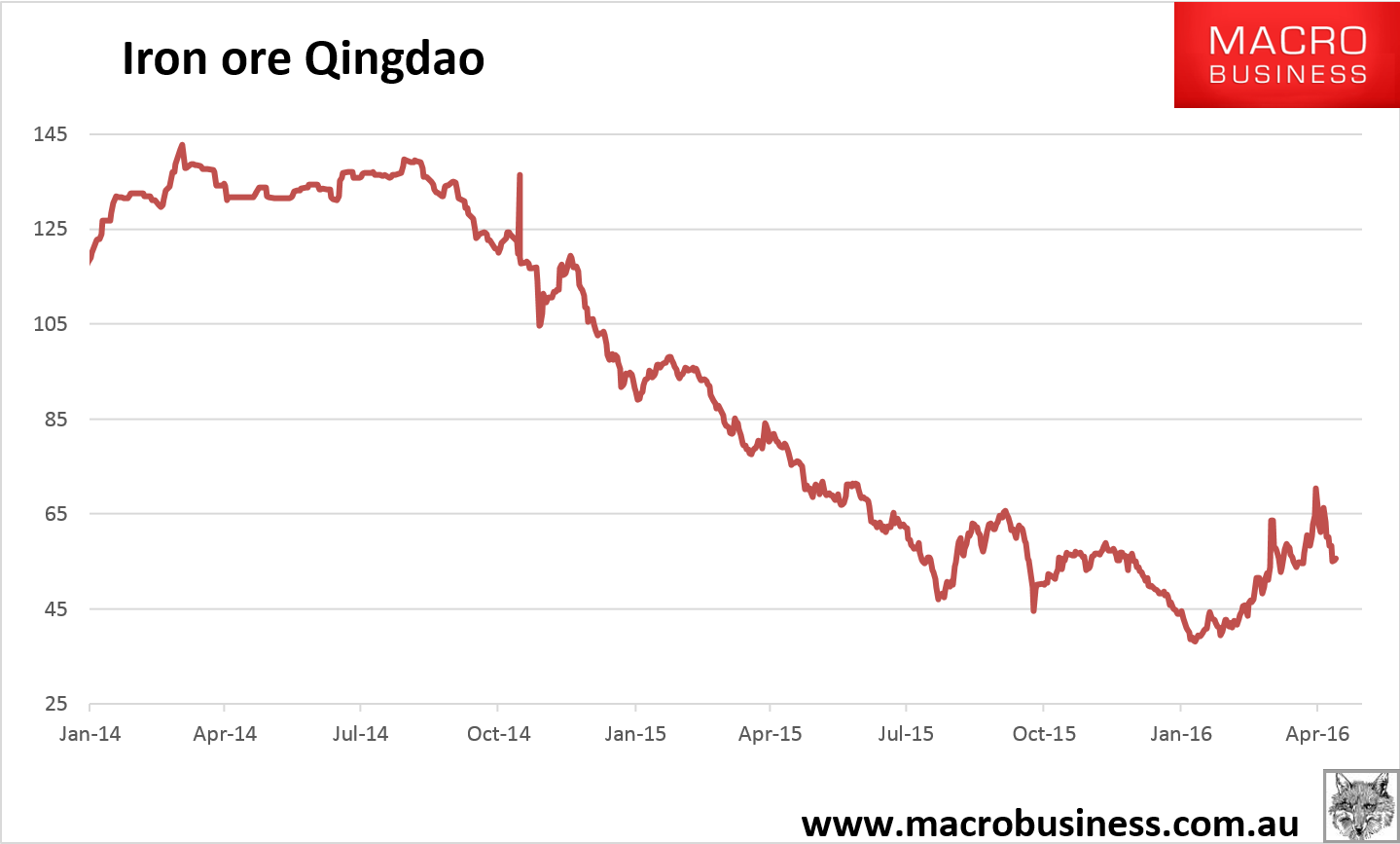A few data issues today so an abbreviated post. Tianjin Benchmark rose 2.2% to $55.40 while Qingdao was up a touch at $55.57:

Dalian was up a touch overnight to 388:

I remain of the view that there is more downside ahead before we stabilise.
In news, there is some excitement about more Chinese infrastructure, from the FT:
The Chinese government is pump almost Rmb5tn into transport infrastructure over the next three years, in a sign of its determination to use state investment to keep the economy humming.
However, analysts said the announcement by the Ministry of Transport added to a sense of confusion about the direction of Chinese economic policy. Infrastructure spending served China well when it was growing rapidly and seeking to build a modern economy but in recent years has resulted in white elephants, industrial overcapacity, economic distortions and debt.
The announcement on Wednesday of the spending — Rmb5tn is equivalent to 6.9 per cent of China’s 2015 gross domestic product — comes despite other influential voices in China warning this week of the alarming degree of leverage in the Chinese economy.
On Monday Communist party mouthpiece the People’s Daily carried a front-page interview with an “authoritative figure”, who said the country’s soaring debt levels could lead to “systemic financial risks”.
“This week is a week of mixed signals,” said Andrew Batson, economist at Gavekal Dragonomics in Beijing. “They’re swinging between poles of emphasising support for growth and emphasising structural reform. It’s not clear what message they are trying to send.”
It is not clear to what extent the funding targets acknowledged this week are new or previously budgeted and approved projects. Many are likely to have been flagged in the five-year plan, approved in March at the annual legislative meeting.
Looks like old news to me.
In other news, India is making its ore cheaper, from TOI:
Kolkata: The ministry of railways has finally yielded to industry’s demand and discontinued the dual freight policy for transportation of iron ore and iron ore pellets. This policy came into effect from Tuesday. The decision, that is likely to result in a boost in the movement of iron ore, was hailed not only by trade and industry but zonal railways as well.
Under the dual freight policy, transportation costs for iron ore or iron ore pellets meant for export were higher than that for loads meant for domestic use. This had resulted in a scam with several unscrupulous traders diverting stocks marked for the domestic market to ports for export. This was followed by a nationwide crackdown on illegal iron ore mining and movement of the mineral fell to a trickle.
“Iron ore production is on an upswing as many mines have started operating after a few years of suspension, following court orders. It has been forecast that India’s iron ore production will be nearly 180 million tonne in 2016-2017. South Eastern Railway (SER) has already started showing results of this upswing. In April, 2016, SER loaded 7.18 million tonne of iron ore. This was an increase of 26.41% in over April, 2015. Iron ore loading for export was about 51 wagons per day. SER loaded 7.08 million tonne iron ore in April, 2016, for domestic use in comparison to 5.68 million tonne in April, 2015. The momentum of April is likely to continue in May, 2016,” a senior SER official said.
India is going to swing sharply to a net exporter this year and stay there, contrary to the propaganda of Australia’s Ministry of Dirt.

